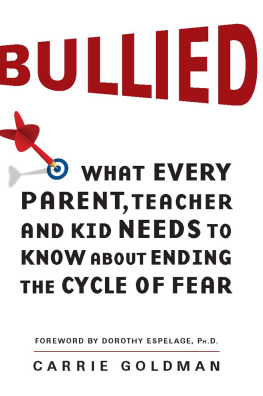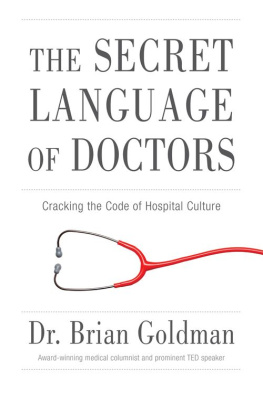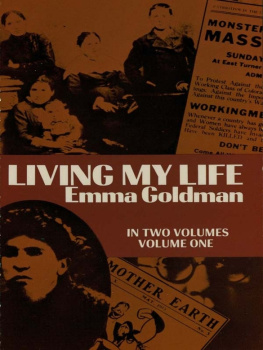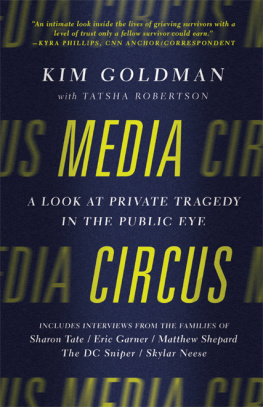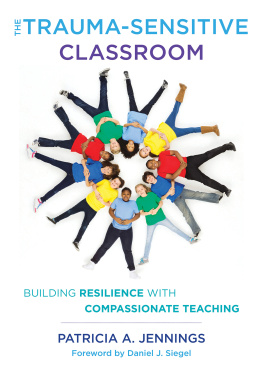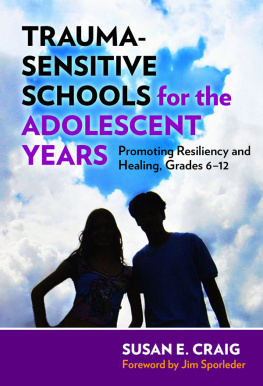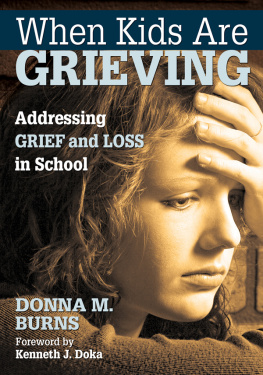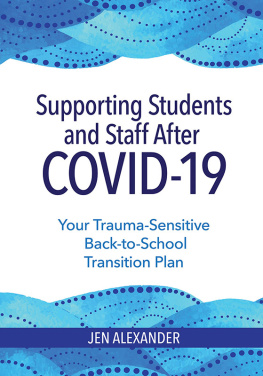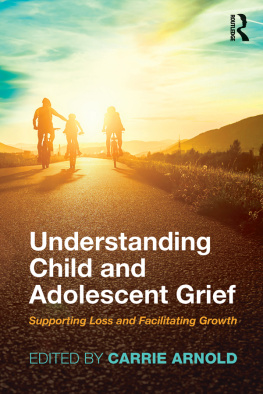
Creating Inclusion
and Well-being for
Marginalized Students
Whole-School Approaches to Supporting
Childrens Grief, Loss, and Trauma
EDITED BY LINDA GOLDMAN

Jessica Kingsley Publishers
London and Philadelphia
Contents
Preface
Once again, Linda Goldman has reached out across cultures to break down barriers and rally caregivers and educators to the aid of our most vulnerable citizens, children who are traumatically bereaved and in desperate need of trauma-informed care. Those who serve and support these precious children now have an extraordinary resource to rely upon, Creating Inclusion and Well-being for Marginalized Students. It is an essential reference for teachers and caregivers and all those who yearn to profoundly impactand quite possibly savea childs life.
Bonnie Carroll
President and Founder of TAPS, Tragedy Assistance Program for Survivors
Recipient of the Presidential Medal of Freedom (2015)
Introduction
As educators, parents, clinicians, and caring adults we often ponder what kind of a world we are creating for our future generations. We are charged with the creation of a global human family whereby every child is important and the conditions under which she or he learns and grows are equally important. One goal is to vigilantly battle, inwardly and outwardly, the war on exclusion, polarization, and multi-separate thinking that creates endless obstacles for the many already marginalized youth in our classrooms. Social exclusion has painful consequences. Students cast off by society tend to suffer unjustly, and may become vulnerable, fragile victims of a culture that views them as insignificant, faceless, and voiceless.
Creating Inclusion and Well-being for Marginalized Students is a resource that addresses the children truly left behind in a system whereby legal accountability may be equated with services, expedience can outweigh human need, and tremendously difficult and challenging life issues are often disregarded to meet a phantom norm often seeking to satisfy the needs of a system, not the needs of each and every student.
As an editor, I was driven to not necessarily answer questions, but to create an open-ended and inclusive conversation that embraces diverse viewpoints. Each contributor shares their perspective of the subject matter, presenting emerging paradigms as a forum for discussion that can lift dialogues toward a higher level of awareness and understanding. One gift of an edited resource is reader exposure to different voices to ultimately establish a welcoming educational environment whereby our underserved students can best learn and grow.
The mandatory questions we need to ask include: How can we help our young people with issues such as poverty, human sex trafficking, and a broad range of stereotyping and scapegoating? How can we help girls and boys with special conditions that may inhibit learning such as immigration, deportation, incarceration, deployment, nutritional challenges, school violence, LGBT concerns, and traumatic death in the military?
Working with grieving and traumatized children has been my lifes work and passion. Personal experiences with students and loss began after college, in 1968, as I entered the field of teaching, where I would remain for 20 years as a first grade, second grade, kindergarten, and reading teacher, as well as guidance counselor, before becoming a grief therapist with children. The following story was my initial teaching experience and the valuable lessons learned (adapted from Stillion and Attig, 2015).
My first class was a group of 22 second grade repeaters. Being a novice as an educator, I was given a class labeled throw away kids, students no one wanted to teach, and placed in an aluminum trailer far removed from the rest of the school building. At the onset of the school year these girls and boys looked sad, withdrawn, and disinterested. During this time in the field of education, many children repeated a grade when they could not achieve the desired academic standards, without insight into the factors that may have inhibited their learning and school performance.
Luckily, I was given free rein in my approach to teaching. I decided on a three-fold plan. The first step was to start at the beginning of the first grade curriculum and re-teach what the children may not have been able to absorb in order to create a uniform foundation for learning. The next step was to enhance self-esteem by creating positive learning experiences, and the third step was allowing children time each day to process their life issues. These simple steps became the seed point for my future work. Thus, I introduced the paradigm that childrens grief and loss issues deeply impact their school performance and potential and influence their ability to learn and grow.
We worked together with these guidelines in mind, each day building concepts based on what the children knew, and each day creating a safe space for sharing life issues. Many of these kids had experienced death at a young age, divorce, multiple moves, and family issues such as alcoholism and abuse. I began to realize that as these young people shared emotional issues, their learning capacity increased.
Our principal visited the classroom that spring, and marveled at the academic progress and the enthusiasm for learning he witnessed. How did you do this? he remarked. The answer became my lifes work to develop and share. It also became the goal and foundation of this book.
The first two chapters of Creating Inclusion and Well-being for Marginalized Students present childhood losses, common signs of grieving children, and a comprehensive plan for educators to create awareness of the multiple loss, grief, and trauma issues students face in our schools, often without the accountability, dialogue, or interventions necessary to help them with challenging circumstances and still grow, learn, and thrive. The third chapter offers a teachers perspective by Kyle Schwartz, who contributes one lesson that gave voice to her students to share life circumstances highlighted in many of these chapters. She merely asked kids in her class to respond to the phrase: I wish my teacher knew. Their answers were incredible, covering a range of topics from poverty, illness, deportation, and incarceration to bullying, loneliness, and peer rejection. In Susan Craig gives an overview of a trauma-informed school that prepares the reader for chapters on specific challenging issues.
addresses individual life circumstances too many marginalized youth encounter. These challenges are recognized and highlighted, and practical ways educators can work with students experiencing issues such as poverty, death, nutrition, stereotyping, sexual exploitation, imprisonment, immigration, military deployment, and LGBT issues are emphasized.
In , this resource offers solutions to working with students in the classroom. It focuses on a strengths-based approach to learning, impact of social media in supporting children and families, the expressive arts as a forum for teaching, a principals practical application of a trauma-informed school, resilience techniques to support students, and a community-based volunteer project focused on enhancing the well-being of children. These solutions inspire students to become all they can be, in an educational environment of caring and protection.
This is a necessary tool for educators in todays world. No longer can teachers merely teach to the curriculum, or a specific age group, without having a deeper understanding of the loss, grief, and trauma issues young people face that impact their learning, safety, and well-being. A worthy goal is to carry these children from being the marginalized and bring them to the mainstream , with equal opportunities for learning and growing within and without of our school systems.
Next page

